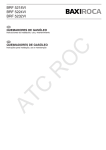Download Calculated Industries 4087 Hardware manual
Transcript
TeleFlow™ Standard ACCOL Load (NOTE: This manual was formerly entitled ’TeleFlow™ Standard ACCOL Load and Menus', TMS menus are now documented in appendices of the TeleFlow hardware manual.) &VMWXSP&EFGSGO D4087 Issue: December, 2000 The information in this document is subject to change without notice. Every effort has been made to supply complete and accurate information. However, Bristol Babcock assumes no responsibility for any errors that may appear in this document. Bristol Babcock does not guarantee the accuracy, sufficiency or suitability of the software delivered herewith. The Customer shall inspect and test such software and other materials to his/her satisfaction before using them with important data. There are no warranties, expressed or implied, including those of merchantability and fitness for a particular purpose, concerning the software and other materials delivered herewith. Request for Additional Instructions Additional copies of instruction manuals may be ordered from the address below per attention of the Sales Order Processing Department. List the instruction book numbers or give the complete model, serial or software version number. Furnish a return address that includes the name of the person who will receive the material. Billing for extra copies will be according to current pricing schedules. ACCOL is a trademark and Bristol is a registered trademark of Bristol Babcock. Other trademarks or copyrighted products mentioned in this document are for information only, and belong to their respective companies, or trademark holders. Copyright (c) 2000, Bristol Babcock, 1100 Buckingham St., Watertown, CT 06795. No part of this manual may be reproduced in any form without the express written permission of Bristol Babcock. A Few Words About Bristol Babcock For over 100 years, Bristol has been providing innovative solutions for the measurement and control industry. Our product lines range from simple analog chart recorders, to sophisticated digital remote process controllers and flow computers, all the way to turnkey SCADA systems. Over the years, we have become a leading supplier to the electronic gas measurement, water purification, and wastewater treatment industries. On off-shore oil platforms, on natural gas pipelines, and maybe even at your local water company, there are Bristol Babcock instruments, controllers, and systems running year-in and year-out to provide accurate and timely data to our customers. Getting Additional Information In addition to the information contained in this manual, you may receive additional assistance in using this product from the following sources: Contacting Bristol Babcock Directly Bristol Babcock’s world headquarters are located at 1100 Buckingham Street, Watertown, Connecticut 06795 USA. Our main phone numbers are: (860) 945-2200 (860) 945-2213 (FAX) Regular office hours are Monday through Friday, 8:00AM to 4:30PM Eastern Time, excluding holidays, and scheduled factory shutdowns. During other hours, callers may leave messages using Bristol’s voice mail system. Telephone Support - Technical Questions During regular business hours, Bristol Babcock’s Application Support Group can provide telephone support for your technical questions. For technical questions regarding the TeleFlow Standard ACCOL load, other ACCOL products, Open BSI Utilities, as well as Bristol’s Enterprise Server®/ Enterprise Workstation® products, call (860) 945-2286. For technical questions about the TeleFlow unit, and other Network 3000 hardware call (860) 945-2502. For technical questions about ControlWave call (860) 945-2244 or (860) 945-2286. For technical questions regarding Bristol’s OpenEnterprise product, call (860) 945-2501 or e-mail [email protected] You can e-mail the Application Support Group at: [email protected] i The Application Support Group also maintains a bulletin board for downloading software updates to customers. To access the bulletin board, dial (860) 945-2251 (Modem settings: 14.4K baud maximum, No parity, 8 data bits, 1 Stop bit.) For assistance in interfacing Bristol Babcock hardware to radios, contact Communication Technologies in Orlando, FL at (407) 629-9463 or (407) 629-9464. Telephone Support - Non-Technical Questions, Product Orders, etc. Questions of a non-technical nature (product orders, literature requests, price and delivery information, etc.) should be directed to the nearest regional sales office (listed below) or to your local Bristol sales office or Bristol-authorized sales representative. U.S. Regional Sales Offices Northeast (Watertown) (860) 945-2262 Southeast (Birmingham) (205) 980-2010 Midwest (Chicago) (630) 571-6052 Western (Los Angeles) (909) 923-8488 Southwest (Houston) (713) 685-6200 Principal International Sales Offices: Bristol Babcock Ltd (UK): (441) 562-820-001 Bristol Babcock, Canada: (416) 675-3820 Bristol Meci SA (France): (33) 2-5421-4074 Bristol Digital Sys. Australasia Pty. Ltd. 61 8-9455-9955 BBI, S.A. de C.V. (Mexico) (525) 254-2131 Please call the main Bristol Babcock number (860-945-2200) if you are unsure which office covers your particular area. Visit our Site on the World Wide Web For general information about Bristol Babcock and its products, please visit our site on the World Wide Web at: www.bristolbabcock.com Training Courses Bristol Babcock’s Training Department offers a wide variety of courses in Bristol hardware and software at our Watertown, Connecticut headquarters, and at selected Bristol regional offices, throughout the year. Contact our Training Department at (860) 945-2343 for course information, enrollment, pricing, and schedules. ii Who Should Read This Document? This document is intended to be read by EGM 3530-xx TeleFlow users who are using the standard software accompanying the TeleFlow™. It assumes that the TeleFlow™ has been installed, and that all network cabling has been connected and tested. EQUIPMENT APPLICATION WARNING The user should note that a failure of this instrument or system, for whatever reason, may leave an operating process without protection. Depending upon the application, this could result in possible damage to property or injury to persons. It is suggested that the purchaser review the need for additional backup equipment or provide alternate means of protection such as alarm devices, output limiting, fail-safe valves, relief valves, emergency shutoffs, emergency switches, etc. If additional information is required, the purchaser is advised to contact Bristol Babcock. This document assumes familiarity with the following subjects: " " " The requirements of their particular process or application. ACCOL programming. Anyone modifying the TeleFlow™ standard ACCOL load should be an experienced ACCOL programmer. For more information, consider attending an ACCOL training class. Also see An Introduction to ACCOL (document# D4056), the ACCOL Workbench User Manual (document# D4051), and the ACCOL II Reference Manual (document# D4044). Universal Operator Interface (UOI) software. Anyone attempting to use the standard TMS menus must be familiar with the UOI software tools. See the UOI Configuration Manual (document# D5074) and the UOI Operator Manual (document# D5075) for details. iii iv Table of Contents Chapter 1 - Introduction 1-1 Chapter 2 - TeleFlow™ Standard ACCOL Load 2-1 Appendix A - Modifying the TeleFlow™ Standard ACCOL Load A-1 v BLANK PAGE Chapter 1 - Introduction What is the TeleFlow™ Standard ACCOL Load? The TeleFlow™ Standard ACCOL Load is included on the TeleFlow™ diskette. This ACCOL load contains ACCOL modules specifically configured to perform various natural gas calculations using a standard I/O setup. It is discussed in detail in Chapter 2 of this manual. The TeleFlow™ Standard ACCOL Load is used in conjunction with the TeleFlow Menu System (TMS) menus (discussed below), and the TeleFlow™ EGM 3530 Electronic Gas Measurement Computer. For information on the TeleFlow™ Electronic Gas Measurement Computer, see the CI-3530-xx hardware manual for your particular TeleFlow™ model. What Are the TMS Menus? The TeleFlow Menu System (TMS) menus, which may be run on the PC, are specifically configured to collect and display data from the TeleFlow Standard ACCOL Load. These menus are discussed in detail in Appendix F of the appropriate TeleFlow™ hardware manual. Modifying or Replacing the TeleFlow Standard ACCOL Load The TeleFlow is a download-able ACCOL device, therefore, the TeleFlow Standard ACCOL Load can be modified or replaced with another compatible ACCOL load. (See Appendix A for some notes about modifying the TeleFlow Standard ACCOL Load.) For example, if the TeleFlow Standard ACCOL Load does not fit your particular application, you may modify the .ACC file in ACCOL Workbench software (available separately from Bristol Babcock,) re-build the ACL file, and download it into the TeleFlow . For more information on ACCOL Workbench, see the ACCOL Workbench User Manual (document# D4051). Be aware, also, that the TeleFlow Menu System (TMS) is closely tied to the TeleFlow Standard ACCOL Load. If you modify the standard load, or create a different load, you will need to modify the menus which make up TMS, using the UOI program (available separately from Bristol Babcock). For more information on UOI, see the UOI Configuration Manual (document# D5074). TeleFlow™ 1-1 Standard ACCOL Load BLANK PAGE Chapter 2 - TeleFlow Standard ACCOL Load Overview The TeleFlow Standard load is a an ACCOL load (ACL file) that is intended for use in the EGM 3530 TeleFlow. This ACCOL load will compute gas flow rate, energy rate and volume and energy totals for a single Orifice meter run. Flow calculations and data storage will be done according to the requirements of Chapter 21 of the American Petroleum Institute Manual of Petroleum Measurement Standards (MPMS). The TeleFlow Standard load supports the following functions: " " " " " " " " " " " " " " " Gas flow calculations per AGA3 (1985) or AGA3 (1992) for an Orifice meter. Compressibility (Zf and Zb) per AGA8Detail or AGA8Gross when AGA3 (1992) is used. Supercompressibility (Fpv) per NX-19 when AGA3 (1985) is used. Energy (Btu/ft3) per AGA5 or from a fixed value. Raise/Lower flow rate control using a PID3TERM module and two Discrete outputs. Pulse output on DO#1 with rate proportional to volume for odorant injection. An Audit Trail holding 200 events and 200 alarms for a total of 400 entries. A Daily Archive file containing 35 days of Daily historical information. A Periodic Archive file containing 35 days of Hourly historical information. A Trend Archive file containing 8 days of 15 minute trend information (can be disabled). Support of a local 2 line display (LCD) and single push-button. Local and Network communications. Backflow detection and alarming. Nomination alarm settings. Input sampling, averaging and Extension calculation every second. TeleFlow™ 2-1 Standard ACCOL Load Chapter 2 - TeleFlow Standard ACCOL Load " " " " " Configurable 1, 2, 5, 15, and 60 second calculation interval. Pulse counting and scaling. Configurable automatic dial-out on alarm occurrence. (NOT YET SUPPORTED) Control of an external radio. Battery charge regulator. NOTE: The EGM 3530 only supports a subset of the ACCOL module library thus some ACCOL modules will not operate. See the ’Hardware and Software Requirements’ section of the ACCOL II Reference Manual (document# D4044) to find out which modules are supported. In addition, the EGM-3530 will not provide some functions that are common in Bristol products; among these are Communication Statistics, Crash Blocks, On-line Diagnostics, Task slip information, and Task rate information. The main task of the TeleFlow Standard Load executes every second and 'wakes up' the hardware (out of low-power mode) and collects 'live' Differential Pressure (DP), Static Pressure (P) and Temperature (T) input data and status data from the internal sensor conditioning circuitry. In accordance with the API MPMS, Chapter 21 requirements, these are averaged over the configured Calculation interval for use in the flow calculations; averaging is 'flow-dependent' in that it only occurs when the DP value is above a configured 'cutoff' level. The live DP and P values are used to compute an Extension value (the square root of the product of the live DP and P) every second; Extension values are added over the Calculation interval, which can be configured at 1, 2, 5, 15 or 60 seconds. The interval is configured by the user to obtain the best balance of power consumption and calculation rate. If a calculation is not scheduled the task completes and the hardware re-enters sleep mode. At the end of a Calculation interval a full flow calculation is performed. Averaged input values for the interval are used in the FPV, AGA8Detail, or AGA8Gross modules to obtain gas compressibility factors. These are then used in an AGA3 (1985 or 1992) equation to compute the flow rate in MSCF per hour. The Extension used in the AGA3 calculation is an average Extension for the Calculation interval TeleFlow™ 2-2 Standard ACCOL Load Chapter 2 - TeleFlow Standard ACCOL Load obtained by summing the Extensions computed every second during the interval and dividing by the number of Extension values summed. The Extension sum is then cleared and averages are reset for another Calculation interval. There are several conditions, which force the Calculation interval to be 1 second as follows. 1. When the Local communications port is in use. 2. When the LCD Display is active (i.e scrolling data for the operator). 3. When PID flow control is active and the flow rate is not within 2% of the setpoint. 4. When the Network Port is active (Carrier Detect is high) In addition to the input signal averages for the Calculation interval, another set of input averages is maintained for each full log period (hour or 15 min) and day; these averages are stored in the Archive for that log. Process Inputs: Differential Pressure (DP), Static Pressure (P), Temperature (T) The process inputs used for the Gas Flow computations are Differential Pressure (DP), Static Pressure (P), and Temperature (T). The DP and P come from the internal, multivariable sensor; the Temperature is measured by an RTD probe. Each second, these values are acquired from the internal sensor and placed in the 'live data' signals. Input Averaging The process inputs DP, P and T 'live data' values are averaged over the configured Calculation interval; the average is a 'flow-dependent time-weighted' value in accordance with MPMS requirements. The averages are calculated for the periods of time when the DP is above the user configured Cutoff level. When there is no flow for the entire Calculation interval, straight arithmetic averages are calculated for the Static Pressure and Temperature. At the end of each Calculation interval the calculated averages are stored in the 'in-use' signals and used to calculate flow rate and volume. Separate averages of DP, P, and T are maintained for each log period (hour or 15 min) and the day. TeleFlow™ 2-3 Standard ACCOL Load Chapter 2 - TeleFlow Standard ACCOL Load Input Override and Calibration Mode The 'in use' signals can be 'frozen' at their current value by setting their standard ACCOL Control Inhibit (CI) on. When an 'in-use' signal (DP, P, or T) is in 'CI' mode, the 'live data' signal continues to reflect the current value from the internal sensor, however, the 'in-use' signal is no longer updated and remains 'frozen' at its current value. Input averaging continues to be performed using the 'in-use' value rather than the 'live data' value. While the 'in-use' signals are in CI mode the Operator can enter an 'Override' value into the signal for use in the input averaging and Gas Flow calculation. When the CALIB (Calibration mode) signal is set ON all the DP, P, and T 'in-use' signals are simultaneously placed in CI mode. Input Alarms The process inputs DP, P, and T are alarm signals with the following default alarm limits: DP P T Low High LowLow HighHigh LDb HDb 10 100 50 250 1500 150 0 0 32 300 2000 250 3 10 3 10 50 10 Digital Inputs Inputs 1 and 2 are free for general use and can be used as alarm inputs or monitoring inputs. The default alarm condition is the ON state, i.e. the alarm occurs when the input enters its ON state. These inputs are updated once a second. Digital Outputs The discrete outputs are shared by the Flow control and Sampler function. When Flow control is enabled: DO 1 - Raise pulse output. DO 2 - Lower pulse output. TeleFlow™ 2-4 Standard ACCOL Load Chapter 2 - TeleFlow Standard ACCOL Load When Sampler output is enabled: DO 1 - Pulse output based on volume (to drive an external totalizer or sampler). DO 2 - general-purpose output. Sampler logic has a default volume of 100 mscf and a default pulse width of 1 second. Flow control has priority for the discrete outputs so that if both Sampler output and Flow control are enabled, Sampler will be shut off and Flow control will use the outputs. Auxiliary Analog Input This input is scaled for 1 to 5 volts, but up to 16 volts can be applied; it can be used as an alarm or monitoring input. Signals are provided that allow this input to be scaled into other units. Voltages higher than 5 volts are scaled accordingly, i.e. 10 volts=200%, 15 volts=300%, etc. The default scaling is: Zero Full scale = 0.0 % (1 volt input) = 100.0 % (5 volts input) Default alarm limits are: Low 10% High 100% Lo-lo 0% Hi-hi 150% LDb 3% HDb 10% This input is updated once each calculation interval. Pulse Input This input accepts pulses at rates up to 5,000 Hz and keeps a running pulse total and frequency value. A scaling factor can be configured to convert pulses into other units i.e., if each pulse is the equivalent of 5 gallons a scaling factor of 5 makes the total be in gallon units. The frequency and total can be read in 'raw' units (counts and Hertz) and also in scaled units. Default pulse scaling factor is 1.0. TeleFlow™ 2-5 Standard ACCOL Load Chapter 2 - TeleFlow Standard ACCOL Load Communications Port Assignments PORT #1 - Pseudo-slave local port, 19200 bps. PORT #2 - BSAP network port, 9600 bps. The baud rate and the RTS/CTS delay may be changed on-line. Communication Port Usage The Local port is used for local configuration and data collection. It usually connects to a PC or Laptop that is running a user-interface software package like TMS or UOI. The Local port will respond to any address; therefore it CANNOT be used in a multi-drop connection. Only the Network port can be multi-dropped (with the necessary external RS-485 converters). The Network port is used generally for data collection via Bristol Peer-to-peer messages coming from another Bristol device such as a Data Concentrator; for this kind of data collection a number of defined lists are provided as well as Slave modules for each list. This port can also be used for data collection or configuration by software such as Open BSI, UOI, TMS, or other third party BSAP protocol based communication systems. The Network port will not respond to messages unless its DCD input is high. Gas Flow Calculations Either the 1985 or 1992 AGA3 calculations can be selected; 1985 calculations are suitable for both Flange and Pipe taps; 1992 calculations only use Flange taps. AGA3 calculations are performed at the end of the configured Calculation interval. (Note: Maximum power conservation is achieved by using the longest calculation cycle.) The Calculation interval is user configurable at 1, 2, 5, 15, or 60 seconds. Under certain conditions the Calculation interval is forced to 1 second. These conditions are: The Local Communications port is in use. The LCD Display button has been pushed and the unit is scrolling the Display List. The unit is in 'charge regulation' mode TeleFlow™ 2-6 Standard ACCOL Load Chapter 2 - TeleFlow Standard ACCOL Load The flow control is active and not close to the setpoint. Super-compressibility (Fpv) and Compressibility ( Zs, Zb, Zf) When the 1985 AGA3 calculation is selected, the Super-compressibility (Fpv) value is calculated using the NX-19 equations. When the 1992 AGA3 calculation is used the Flowing (Zf) and Base (Zb) compressibility factors are calculated using either the AGA8Detail or AGA8Gross module. The AGA8Gross module provides either the G,C,N or HV, G, C modes. If the Base Pressure or Base Temperature differ from Standard conditions (14.73 o psia, 60 F) and the 1992 AGA3 calculation is in use, an AGA8Detail or AGA8Gross module will be executed to calculate standard compressibility Zs for the defined gas composition. The calculation of Zs will be done once per minute or whenever a related gas constant changes. Flow Rates Gas Flow-rate is calculated in mscf/hr using an AGA3Term module if the 1985 calculation is selected, otherwise the AGA3Iter module (1992 calculation) is used. Because of MPMS requirements the Extension value is supplied to these modules externally. Flow rate in mscf/hr is converted to mscf/day and is available for reading. Flow Rate Alarm The flow rate signal is an alarm signal with default alarm limits (in mscf/hr): Low High Lo-lo Hi-hi LDb HDb 0 3000 0 5000 50 50 Flow Volume Totals At the end of each Calculation interval the volume for that interval is added to totals for the hour, day, current month and 'running' totalized volume. At the end of each hour, day, and month the accumulated volume for that period is stored and TeleFlow™ 2-7 Standard ACCOL Load Chapter 2 - TeleFlow Standard ACCOL Load the total cleared for the next period. The running total is not cleared; it accumulates to 10 million at which point it rolls over to zero and continues accumulating. Averaged Extension The average value of the Extension ( square root of the product of process DP and absolute Static Pressure) is computed for each log period (hour or 15 min) and for the day and saved in an archive. This average is maintained separately from the value used in calculating the flow volume for a Calculation interval. Back Flow The time spent in a Back Flow condition is totaled for the current and previous day and an alarm is generated if the condition exceeds a user-specified limit. As each input sample is processed, the DP reading is examined to see if a Back Flow condition is present.; (i.e. DP is less than 0.0 and the absolute value of DP is greater than the DP Cutoff). If a Back Flow condition is detected, a Back Flow timer is started. If the Back Flow condition remains in effect for a user configured number of seconds, a Logical Alarm signal is turned 'ON'. The amount of time during which a Back Flow condition has been detected for the current day is accumulated in an Analog signal. At the end of the contract day, the value in this signal is transferred into the previous day's Back Flow Time signal and the signal is set to 0.0. All intervals of Back Flow are accumulated, independent of the alarm state. (i.e. Short durations of Back Flow, less than the Back Flow timer, are accumulated even though the Back Flow Alarm is not turned 'ON'.) Gas Energy Calculations Gas flow volume for a Calculation interval is converted to energy in MMBTU (i.e. DekaTherms; a DekaTherm is 10 million Btu) by multiplying by a Heating value in BTU/cu.ft. and dividing by 10 million; the Heating value can come from a fixed value or from an AGA5 calculation. The energy for the interval is summed to produce an energy total in MMBTU for the each hour and day, and for the current month. Flow rate is converted to energy rate in MMBTU/hr. TeleFlow™ 2-8 Standard ACCOL Load Chapter 2 - TeleFlow Standard ACCOL Load Low-Flow Cut-OFF The 'live' Differential pressure is always compared to a CUTOFF signal set in inches of water. When the DP value drops below the value of the CUTOFF signal, flow calculation will cease and the calculated flow-rate will be zero. Default cutoff is 0.25 inches of H2O. Flow Time While the DP is above the Cutoff limit the unit will accumulate a flow-time count in minutes for the hour and day. In a backflow condition a separate backflow time is accumulated. Archive Files Periodic Archive The interval is 1 hour. At the end of the interval, the information shown below is written into a periodic archive file. If log break is enabled, these values are written when a configuration value changes. DATE/TIME LOCAL SEQUENCE NUMBER GLOBAL SEQUENCE NUMBER AVERAGE DP AVERAGE STATIC PRESSURE AVERAGE FLOWING TEMP. FLOW TIME AVERAGE EXTENSION ACCUMULATED VOLUME ACCUMULATED ENERGY AVERAGE AUXILIARY INPUT INH2O PSIG DEGF MINS MSCF MMBTU % Daily Archive At the end of every day the information shown below is written into a daily archive TeleFlow™ 2-9 Standard ACCOL Load Chapter 2 - TeleFlow Standard ACCOL Load file. DATE/TIME LOCAL SEQUENCE NUMBER GLOBAL SEQUENCE NUMBER AVERAGE DP AVERAGE STATIC PRESSURE AVERAGE FLOWING TEMP. FLOW TIME AVERAGE EXTENSION ACCUMULATED VOLUME ACCUMULATED ENERGY AVERAGE AUXILIARY INPUT INH2O PSIG DEGF MINS MSCF MMBTU % Trend Archive If the Trend log is enabled then every 15 minutes the live (not averaged) input values are written to a trend archive as shown below. DATE/TIME LOCAL SEQUENCE NUMBER GLOBAL SEQUENCE NUMBER DIFF. PRESSURE STATIC PRESSURE FLOWING TEMP. INH2O PSIG DEGF Log Break When the Log Break option is enabled archive log-break will occur when the Orifice plate size or other flow-related constant is changed. Flow Control Raise/lower Flow-rate control is achieved using a PID3TERM Module. The Flow Controller uses a FLOW SETPOINT signal and the calculated flow rate signal as inputs to the PID3TERM module, the output of which generates raise/lower pulses on the discrete outputs (Raise on DO#1, Lower on DO#2). Default settings are: TeleFlow™ 2-10 Standard ACCOL Load Chapter 2 - TeleFlow Standard ACCOL Load Gain Integral Derivative Deadband Valve travel Pulse width Max rate 1 1 repeat/min 0 mins 0 30 secs 1 sec 5000 mscf/hr Radio Control Two radio control functions are available; Scheduling and Sensing (also called 'Fast radio'). Radio Scheduling is used to conserve battery power by allowing the radio to be powered up for a short time every day in expectation of receiving a message from a remote 'host' during that time. If Radio Scheduling is enabled, the system will turn ON the radio at a defined time (an hour of the day) and keep it on for a defined length of time, usually in a period of minutes. A user-configured 'listen' timer is also started so that if no messages are received while the timer is running the radio will turn OFF to save power. The radio can also be activated manually for testing via the local port. Radio power is controlled using a system signal that turns an auxiliary power output ON or OFF. If Radio Sensing is enabled the system will turn the radio on at a defined time (an hour of the day) and begin a sequence in which the radio is turned ON every so many seconds but for 'listen' time intervals less than 1 second. It continues this sequence until the defined 'stop' hour is reached. If a message is received while the radio is ON the system will keep the radio ON, process the message and respond. After every response the radio remains ON for one more 'listen' time, after which it is shut OFF. Both radio control functions can be active simultaneously. Modem Dial-Out (THIS FUNCTION IS NOT YET SUPPORTED) This feature makes use of the ACCOL Slave Auto-dial function. When DIALOUT is enabled and a trigger condition is satisfied the load will automatically dial a phone number (the modem option must be installed) held in the Dial List. The number of the Dial list is held in system signal #DIAL.001. Up to 13 different trigger conditions can be armed to initiate the call. Program logic examines the state of the signal associated with an 'arm' signal and, should it be in an Alarm state, sets a non-zero value into the Dial Enable signal in the Dial List to start the call. The dial TeleFlow™ 2-11 Standard ACCOL Load Chapter 2 - TeleFlow Standard ACCOL Load commands sent to the modem (i.e. initialization, phone number) are defined by signals in the Dial list. The use of the modem dial out function implies that the called device has been set up to 'know' that it should poll for alarms after it answers the call and then hangup. Dialing logic will dial the first phone number three times and then dial a second number three times, the combination constituting one 'dial-attempt'. To conserve power the maximum number of attempts per hour is two; this value can be configured up to 9 by the user. Battery Charge Control Signals are provided to allow charge regulator setup and control for either a 6 or 12 volt battery. Should the charge regulator detect battery overcharge, an alarm occurs, and a shunt regulator is activated which deactivates the solar panel, thereby preventing an overcharge condition. Power and Load Status Alarms The main voltage value will be held in an alarm signal with default limits (in Volts) as follows: Low High Lo-lo Hi-hi LDb HDb 5.75 16.0 5.5 16.5 .5 .5 A number of 'load status' logical alarms are provided as follows: Backflow alarm Low DP (cutoff ) Backup battery External battery overcharge AGA8 Calculation error Floating-point math error System self-check Sensor conversion Sensor checksum TeleFlow™ backflow is detected Dp below cutoff low RAM backup battery excess voltage into the external battery final value is approximate system problem conversion error compensation has changed 2-12 Standard ACCOL Load Chapter 2 - TeleFlow Standard ACCOL Load Audit/Event Log The EAUDIT module (in Task 0) is set up to collect both alarms and events, with event signals defined by the signals in list 23. The module is defined with enough space for 400 alarms and events, and the module operates such that 200 alarms and 200 events are kept separate until the Audit log is collected. This design prevents a toggling alarm or event from filling the entire alarm/event log buffer to the exclusion of all other entries. Gas Data Lists For Master Node Access Data lists are provided to support the gathering of gas data from a master node via the Network port using Bristol peer-to-peer messages. The associated slave point number is shown. Lists without slave points can only be read using Open BSI DataView. LIST 10 Full Configuration Firmware revision (progrev) Unit ID Meter ID Meter number Alarm report format Alarm report format 1 Display alarms Flow equation Base pressure Base temperature Pipe material Orifice material AGA8 Method AGA8 Gross mode Contract hour Pipe diameter Pipe ref temperature Tap location Tap type Orifice diameter Orifice ref temperature Low DP cutoff TeleFlow™ 2-13 Standard ACCOL Load Chapter 2 - TeleFlow Standard ACCOL Load DP Full scale pressure DP Pressure zero SP Full scale pressure SP Pressure zero Temperature full scale Temperature zero Rate lo-lo Rate lo Rate hi Rate hi-hi Rate hi deadband Rate lo deadband DP lo-lo DP lo DP hi DP hi-hi DP hi deadband DP lo deadband SP lo-lo SP lo SP hi SP hi-hi SP hi deadband SP lo deadband Temp lo-lo Temp lo Temp hi Temp hi-hi Temp hi deadband Temp lo deadband Batt lo-lo Batt lo Batt hi Batt hi-hi Batt hi deadband Batt lo deadband Barometric pressure Specific heat ratio Heating value fixed Heating value source Specific gravity Gravity type Viscosity CH4 TeleFlow™ 2-14 Standard ACCOL Load Chapter 2 - TeleFlow Standard ACCOL Load N2 CO2 C2 C3 H2O H2S H2 CO O2 IC4 NC4 IC5 NC5 C6 C7 C8 C9 C10 HE AR Sampler enable Sampler volume Sampler pulse width Flow controller enable Valve limit Flow setpoint Flow deadband Gain Integral Derivative Max flow rate Valve travel time Flow calculation interval Periodic log interval Break on change Trending log enable RTS/CTS mode RTS delay Auxiliary power default Radio scheduling enable Radio listen time Radio comm. timeout Radio start hour Radio stop hour TeleFlow™ 2-15 Standard ACCOL Load Chapter 2 - TeleFlow Standard ACCOL Load Radio local comm. time Radio local timeout Radio time per node Radio time per group Radio minute offset into hour Nomination enable Nomination unit Nomination mode Nomination stop mode Nomination Daily mode Nomination Alarm dialout Nomination Alarm percent Next start date Next start hour Next stop date Next stop hour Demand enable Demand interval Demand duration Demand start hour Demand end hour Off/On MSCF/MMBTU Fast/PID Off/On Off/On 0 - 100 LIST 11 Calculated Data - Slave Point 1 Flow Rate Beta Ratio Ev Cd Zs Zb Zf Y Extension C-prime LIST 12 Configuration #1 - Slave Point 2 Orifice Diameter Pipe Diameter Specific Gravity Heating Value Barometric Pressure Base Pressure TeleFlow™ .250" to 31" 2" to 31" 2-16 0 0 Standard ACCOL Load Chapter 2 - TeleFlow Standard ACCOL Load Base Temperature Flowing Viscosity Ratio of Specific Heat Tap Location Tap Type Dp Cutoff LIST 13 Configuration #2 - Slave Point 3 Firmware version (progrev) Meter Number Flow Equation 1985/1992 Calculation Interval Contract Hour Logging Interval Break Log option Heat Value source Gravity type AGA8 Method AGA8 Gross Mode LIST 14 Controller - Slave Point 4 Sampler Enable Sampler Volume Sampler Duration Flow Rate Control Valve Limiting Setpoint Deadband Gain Integral Derivative Valve Travel Time Maximum Flow Rate Nomination enable Nomination unit Nomination mode Nomination stop mode Nomination Daily mode Nomination Alarm dialout Nomination Alarm percent Next start date TeleFlow™ On/Off 0 - 10000 MCF 1.0 Secs Off/On Off/On 0 MSCF 0 0-100 0-60 RPTS/Min 1 0-60 Min 0 1-30 SEC 30 5000 MSCF 5000 Off/On MSCF/MMBTU Fast/PID Off/On Off/On 0 - 100 2-17 Standard ACCOL Load Chapter 2 - TeleFlow Standard ACCOL Load Next start hour Next stop date Next stop hour LIST 15 AGA8 Gross Config Specific Gravity Heating Value CO2 content Nitrogen content AGA8 Gross Mode Gravity type LIST 16 AGA8 Detail Gas composition Methane Nitrogen CO2 Ethane Propane H2O H2S H2 CO O2 I-Butane N-Butane I-Pentane N-Pentane Hexane Heptane Octane Nonane Decane Helium Argon LIST 17 AGA3 1985 Factors Flow Rate Beta Ratio Fpb TeleFlow™ 2-18 Standard ACCOL Load Chapter 2 - TeleFlow Standard ACCOL Load Ftb Fg Ftf Fa Fr Y Fb Fpv C-prime Extension LIST 18 Communication configuration Network port baud rate CTS/RTS mode RTS delay Aux power default Radio sched enable Radio on-time Radio listen time Radio start hour Radio end hour Local on-time Local listen time Node time Group time Offset into hour Demand enable Demand interval Demand duration Demand start hour Demand end hour Dialout on an Alarm enable Dial on Cutoff enable Dial on Backflow enable Dial on Transmitter fail enable Dial on Backup battery low enable Dial on Fl.Pt error enable Dial on Selftest error enable Dial on DP alarm enable Dial on SP alarm enable Dial on TF alarm enable Dial on Flow rate alarm enable Dial on Battery alarm enable TeleFlow™ 2-19 Standard ACCOL Load Chapter 2 - TeleFlow Standard ACCOL Load Dial on Auxiliary input alarm enable Dial on Charger alarm enable Dial on Nomination alarm enable LIST 20 Live Data Diff pressure Static pressure Temperature Flow rate Operator change LIST 21 Rate and Volume - Slave Point 5 Flow rate Flow rate @ Std Energy rate Daily flow rate Flow time today Volume today Energy today Flow time yesday Volume yesday Energy yesday Volume this month Energy this month Volume totalizer Energy totalizer Volume last month Energy last month Scaled frequency Scaled pulses today Scaled pulses yesterday Scaled pulses total LIST 22 Inputs - Slave Point 6 Diff pressure Static pressure Temperature System power volts Power input 1 volts Power input 2 volts TeleFlow™ 2-20 Standard ACCOL Load Chapter 2 - TeleFlow Standard ACCOL Load Backup battery volts PC board temperature Auxiliary input Total pulses Pulse Frequency DO#1 DO#2 DI#1 DI#2 LIST 50 LCD Display list Meter ID System power Aux input Diff pressure Flowing pressure Temperature Daily flow rate Flow time today Volume today Volume yesday Volume totalizer TeleFlow™ 2-21 Standard ACCOL Load BLANK PAGE Appendix A Modifying the TeleFlow Standard ACCOL (TSA) Load Modifying or Replacing the TeleFlow Standard ACCOL Load & Menus The TeleFlow is a download-able ACCOL device, therefore, the TeleFlow Standard ACCOL Load can be modified or replaced with another compatible ACCOL load. For example, if the TeleFlow Standard ACCOL Load does not fit your particular application, you may modify the .ACC file in ACCOL Workbench software (available separately from Bristol Babcock,) re-build the ACL file, and download it into the TeleFlow . For more information on ACCOL Workbench, see the ACCOL Workbench User Manual (document# D4051). NOTE: The TeleFlow only supports a subset of the ACCOL module library thus some ACCOL modules will not operate. See the 'Hardware and Software Requirements' section of the ACCOL II Reference Manual (document# D4044) to find out which modules are supported. In addition, the EGM-3530 will not provide some functions that are common in Bristol products; among these are Communication Statistics, Crash Blocks, On-line Diagnostics, Task slip information, and Task rate information. Be aware, also, that the TeleFlow Menu System (TMS) is closely tied to the TeleFlow Standard ACCOL Load. If you modify the standard load, or create a different load, you will need to modify the menus which make up TMS, using the UOI program (available separately from Bristol Babcock). For more information on UOI, see the UOI Configuration Manual (document# D5074). Another restriction on modifying the ACCOL load is that the communication ports and process I/O boards must be configured consistently with the design of the TeleFlow. Table 1-1, below, shows the required port configuration; Table 1-2, shows the required process I/O configuration. Table 1-1 Process I/O Board Options I/O Slot Number Process I/O Board Name 1 Digital Input Board with 2 or 10 points (or no board installed) 2 Digital Output Board with 2 or 10 points (or no board installed) TeleFlow™ A-1 Syntax in ACC File DI2 DI10 DO2 DO10 Standard ACCOL Load and Menus Appendix A Modifying the TeleFlow Standard ACCOL (TSA) Load 3 Analog Input Board with 1, 4, 5, or 8 points (or no board installed) 4 High Speed Counter Board with 1, 2, or 3 points (or no board installed) Analog Output Board with 1 point (or no board installed) 5 AI1 AI4 AI5 AI8 HSC1 HSC2 HSC3 AO1 Table 1-2 Communication Port Options PORT Port Type A Pseudo Slave Baud Rate 300 - 38,400 B Slave 300 - 38,400 C Master 300 - 38,400 Notes Asynchronous Local Port Asynchronous Network Port Asynchronous Expanded I/O Port NOTES ON POWER CONSUMPTION: Assuming the Local Port is unused, the Network port is inactive, and the LCD display is inactive, the 3530 will enter 'sleep' mode if it is not currently executing an ACCOL task. The larger the ACCOL load, the longer it takes to execute, and the longer the unit 'stays awake'. Load functions should be scheduled to run only when needed. This means using logical signals as flags to control execution. Load tasks should be carefully partitioned to execute only when necessary, so that maximum 'sleep' time is obtained, thereby reducing power consumption. TeleFlowTM A-2 Standard ACCOL Load and Menus READER RESPONSE FORM Please help us make our documentation more useful to you! If you have a complaint, a suggestion, or a correction regarding this manual, please tell us by mailing this page with your comments. It’s the only way we know we’re doing our job by giving you correct, complete, and useful documentation. DOCUMENT NUMBER: D4087 TITLE: TeleFlow Standard ACCOL Load ISSUE DATE: December, 2000 COMMENT/COMPLAINT: ______________________________________________________________________________ ______________________________________________________________________________ ______________________________________________________________________________ ______________________________________________________________________________ ______________________________________________________________________________ ______________________________________________________________________________ ______________________________________________________________________________ ______________________________________________________________________________ ______________________________________________________________________________ ______________________________________________________________________________ ______________________________________________________________________________ ______________________________________________________________________________ ______________________________________________________________________________ Mail or FAX this page to: Bristol Babcock Inc. 1100 Buckingham Street Watertown, CT 06795 FAX#: (860) 945-2213 Attn: Technical Publications Group, Dept. 610 RRF - 12/2000 &VMWXSP&EFGSGO-RG an FKI company 1100 Buckingham Street Watertown, CT 06795 Telephone: (860) 945-2200




































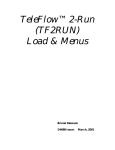

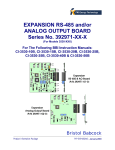
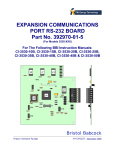
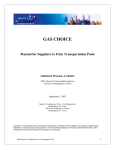
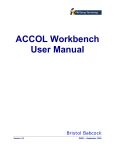
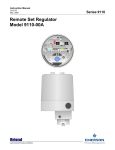
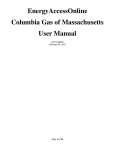
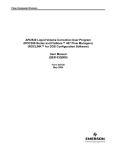
![EnergyAccessOnline User Manual[1]](http://vs1.manualzilla.com/store/data/005906408_1-e15b8e64694c6ea91dc3f2c3109f09fc-150x150.png)
